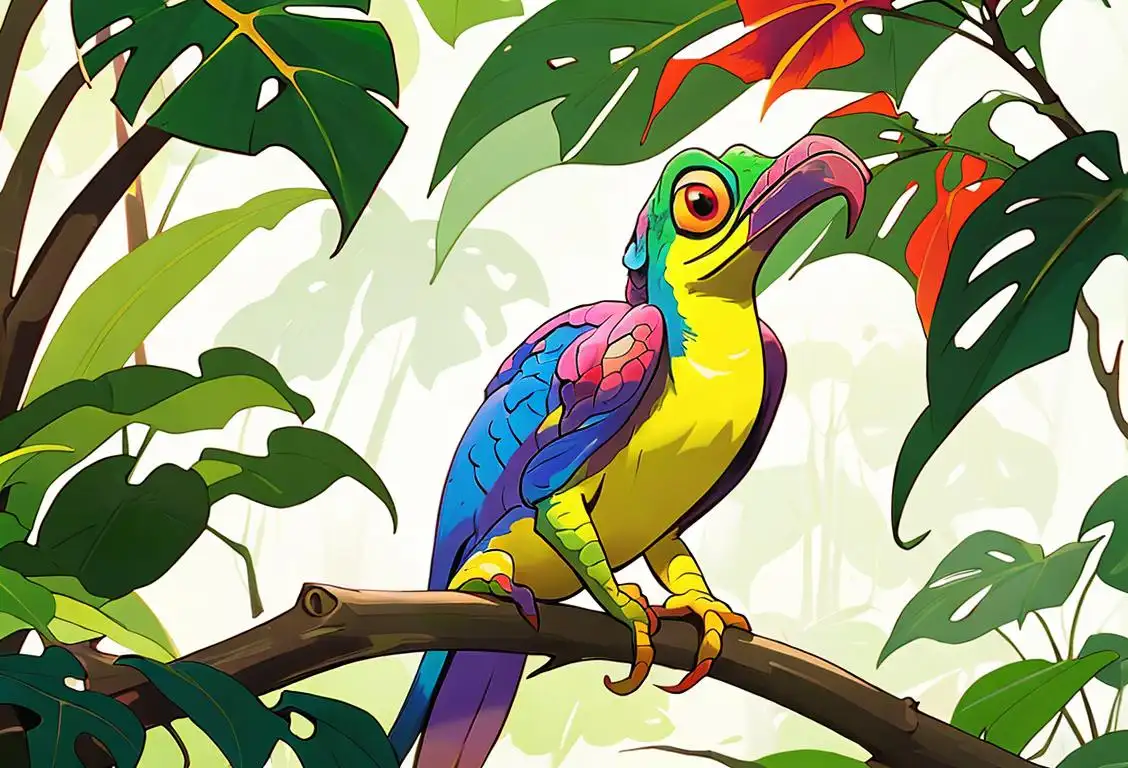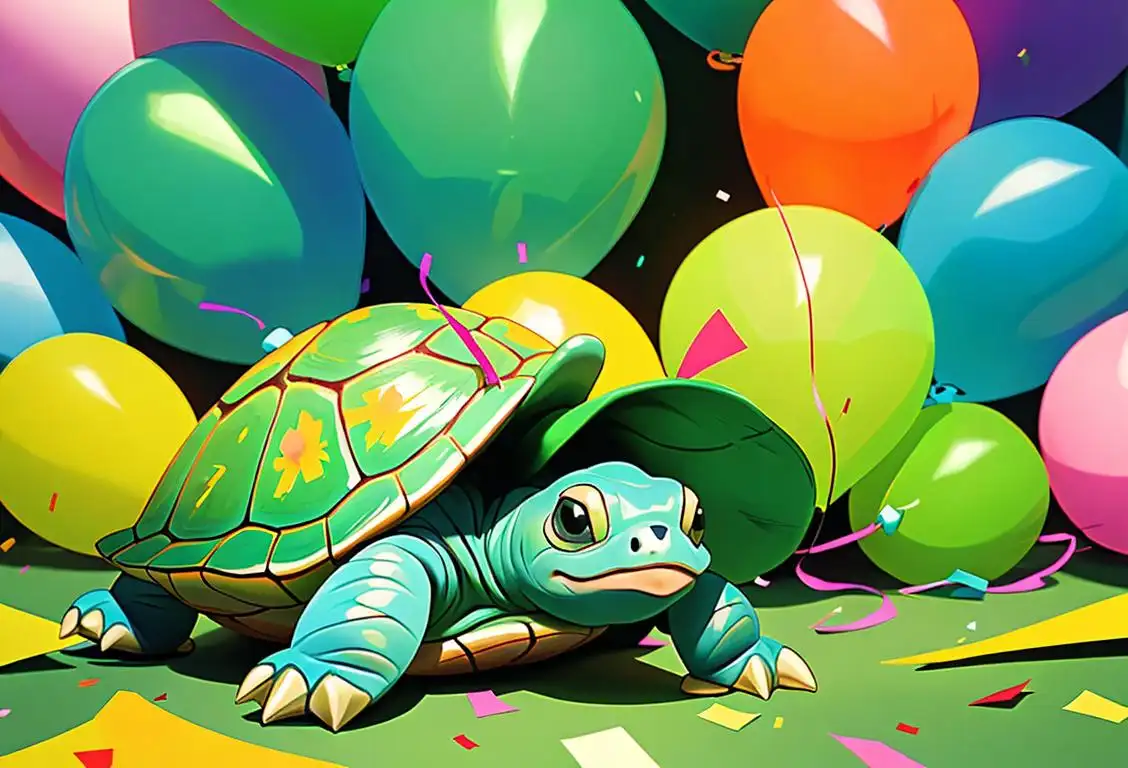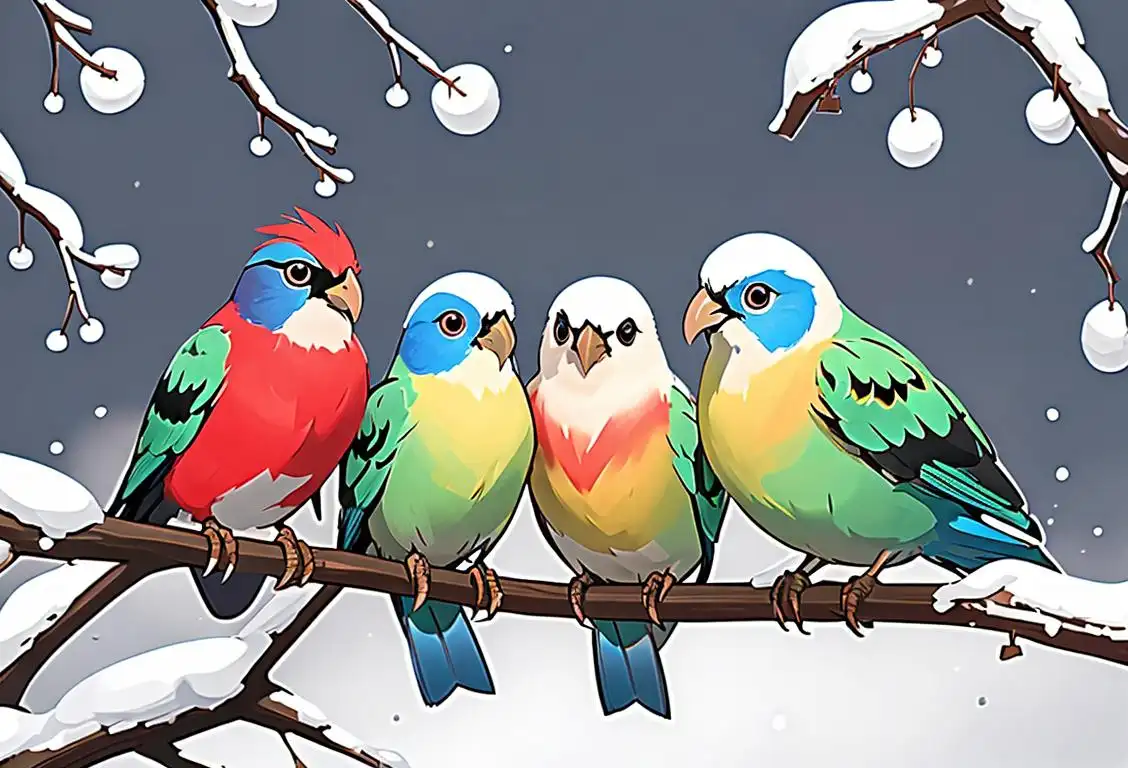National Chameleon Day

Welcome to the colorful world of National Chameleon Day! Get ready to blend in and stand out with these fascinating creatures. Whether you're a fan of their impressive camouflage skills or just love their quirky personalities, this national day is the perfect time to celebrate all things chameleon.
When is Chameleon Day?
It's national chameleon day on the 16th August.
A Brief History of National Chameleon Day
While chameleons have been captivating our imaginations for centuries, National Chameleon Day is a relatively new addition to the calendar. It first gained popularity on August 16, 2020, when the internet exploded with mentions of these remarkable reptiles. Since then, chameleon enthusiasts around the world have come together each year on this day to share their admiration and spread awareness about these fascinating creatures.
Chameleons are known for their ability to change colors and blend seamlessly into their surroundings. They have captivated the minds of scientists and artists alike, inspiring awe and wonder. National Chameleon Day is a chance to celebrate the unique beauty and adaptability of these creatures, while also raising awareness about their conservation needs.
How to Celebrate National Chameleon Day
There are plenty of ways you can honor National Chameleon Day and show your appreciation for these fascinating reptiles:
- Learn more about chameleon species from different parts of the world. Did you know that the chameleon's color-changing ability is primarily used for communication and not just for camouflage? Each color change conveys a particular message to other chameleons.
- Visit a local zoo or reptile exhibit to see chameleons up close and personal. Take the opportunity to chat with zookeepers or reptile experts to learn more about them.
- Engage with chameleon enthusiasts online by joining forums or social media groups dedicated to these remarkable creatures. Share photos, stories, and interesting facts with fellow chameleon lovers.
- Create chameleon-inspired artwork or crafts. Let your imagination run wild and see what you can come up with! Paint a colorful chameleon on canvas, make a chameleon-shaped clay sculpture, or even design your own chameleon-themed clothing.
Did You Know?
Chameleons not only change colors but also have incredible tongue-snapping abilities. Some chameleon species can extend their tongues up to twice the length of their body to capture prey. Talk about a superpower!
History behind the term 'Chameleon'
1st Century AD
Ancient Greek Roots
The word 'chameleon' derives from the Ancient Greek word 'khamai' meaning 'on the ground,' and 'leon' meaning 'lion,' referring to the reptile's lion-like mane. Although the term was not specifically used to describe chameleons at that time, it laid the foundation for the name to come into existence in the future.
14th century
The birth of 'chameleon'
During the 14th century, the term 'chameleon' emerged in the English language. It was derived from the Latin word 'chamaeleon' and the Greek word 'khamaileōn', meaning 'earth lion.' This unique and elusive reptile fascinated ancient civilizations with its ability to change colors to match its surroundings.
14th Century
Introduction to English Language
In the 14th century, the term 'chameleontis' entered the English language through Old French. It was used to refer to the mythical creature 'chameleon,' portraying its ability to change colors and blend into its surroundings. The term started to gain popularity as people became intrigued by the chameleon's ability to change its appearance.
1661
First scientific description
In 1661, French naturalist and zoologist, François Bernier, published the first scientific description of chameleons. He observed and studied several chameleon species during his travels to India. Bernier's work laid the foundation for the scientific understanding of these remarkable creatures.
16th Century
Scientific Classification
During the 16th century, the term 'chameleon' began to be used in the context of scientific classification. The renowned Swiss naturalist, Conrad Gessner, in his book 'Historia Animalium,' defined the term as a reptile capable of changing colors. This marked the recognition of chameleons as a distinct group within the animal kingdom.
19th century
Symbolic representation of versatility
Throughout the 19th century, the term 'chameleon' gained metaphorical significance. It began to represent the concept of adaptability and versatility due to the chameleon's ability to blend into different environments. This symbolic usage reflected the human capacity to adapt and adjust to various situations.
20th century
Chameleon in popular culture
In the 20th century, chameleons became popularized in literature, art, films, and even cartoons. Their ability to change colors and blend in with their surroundings made them a fascinating subject for creative expression. Numerous stories and visual representations showcased chameleons as characters with transformative abilities.
19th Century
Symbolism and Metaphor
In the 19th century, the term 'chameleon' took on a metaphorical meaning beyond its literal definition. It became associated with adaptability and versatility. The chameleon's ability to change colors to match its environment became a powerful symbol for individuals who effortlessly adapted to different situations and surroundings.
20th Century
Pop Culture References
The term 'chameleon' entered popular culture during the 20th century. It became a frequently used metaphor in literature, music, and art to represent individuals who could adapt their personalities or beliefs to fit various contexts. The concept of a 'social chameleon' or a person who could effortlessly blend in with different social groups gained widespread recognition.
Present day
Chameleon as a metaphor
Today, the term 'chameleon' is widely used as a metaphor to describe individuals who exhibit flexibility, versatility, or the ability to adapt easily. It underscores the virtue of being able to adjust and change according to the circumstances. The chameleon's legacy continues to inspire and influence our understanding of human behavior.
Did you know?
Chameleons not only change colors but also have incredible tongue-snapping abilities. Some chameleon species can extend their tongues up to twice the length of their body to capture prey. Talk about a superpower!Tagged
awareness fun animalsFirst identified
16th August 2020Most mentioned on
16th August 2020Total mentions
6Other days
Giraffe Day
Badger Day
Horse Day
Pupper Day
Bat Appreciation Day
Turtle Day
Bird Day
Penguin Day
Squirrel Appreciation Day
Red Panda Day









